 Many thanks to my friends Michelle Davidson and Joel Nichols for welcoming me every other Thursday morning to discuss what we can do each day to be proactive, healthy, and happy! I am so grateful for the opportunity to share!
Many thanks to my friends Michelle Davidson and Joel Nichols for welcoming me every other Thursday morning to discuss what we can do each day to be proactive, healthy, and happy! I am so grateful for the opportunity to share!
Just in time for Valentine’s Day, we’re taking another look at chocolate? Is it healthy or is it toxic?
Well it all depends on the on the type you choose and, of course, the amount you eat! But the good news is there are many health benefits of eating dark chocolate! In addition to releasing endorphins and seratonin (the love drug) eating a bit of good dark chocolate could reduce your risk for stroke, heart disease and type 2 diabetes! Check it out!
The health benefits of eating GOOD chocolate
100 grams of chocolate includes a myriad of nutrients, minerals, antioxidants and fiber.
- Zinc
- Phosphorous
- Potassium
- Manganese 98% of your daily requirements
- Copper. 89% of your daily requirements
- Magnesium 58% of your daily requirements
- Iron 67% of your daily requirements
- Selenium
- 11 grams of fiber
These antioxidants in the form of flavanols are extremely helpful for the body as they are able to target cells in your body and help them resist the damage that can be done by environmental factors and free radicals. The results include greater blood flow to help reduce blood pressure, cardio vascular disease and brain function. It also helps reduce blood clots.
Believe it or not, the cacao in dark chocolate enhances sensitivity to insulin and helps lower blood sugar levels. As a result, dark chocolate may lower one’s risk for type 2 diabetes. Also, with type 2 diabetes, managing blood sugar levels is what it’s all about and dark chocolate in moderation can help achieve this.
In a small study of healthy adults, those who ate half an ounce of dark chocolate a day for 15 days had better insulin sensitivity, and lower blood pressure to boot, than adults who ate a similar amount of white chocolate.
5. Chocolate has also been proven to help digestive issues.
I really didn’t expect this but a bit of food chocolate can help curb digestive disturbances like diarreah. Of course, I didn’t mention this on TV but it’s true!
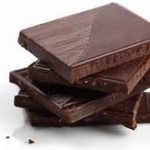 Chocolate 101
Chocolate 101
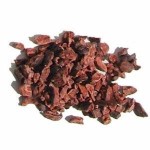 CACAO NIBS, RAW CACAO, ROASTED CACAO AND GROUND CACAO
CACAO NIBS, RAW CACAO, ROASTED CACAO AND GROUND CACAO
This is the cacao bean, minus the shell, and nothing else. You can buy cacao raw or roasted. Whole cacao is the whole bean, cacao nibs are crunched up pieces of bean, and ground cacao is powdered. Really the healthiest form of chocolate there is, cacao can sometimes be quite bitter.
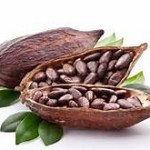
CHOCOLATE LIQUEUR
This is the basis of all types of chocolate, formed by grinding cacao beans into a smooth, liquid paste. Nothing is added, and it does not contain alcohol, despite the name. It naturally contains about 53% cocoa butter (fat).
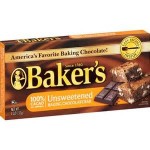 UNSWEETENED CHOCOLATE
UNSWEETENED CHOCOLATE
Also known as “bitter” or “baking” chocolate. This is pure chocolate liquor, composed solely of ground cocoa beans. Although it looks and smells like chocolate, it has a bitter taste and is not meant for consumption on its own—it is best used in cooking, when it can be combined with sugar to make it more palatable. Because cocoa beans contain equal amounts of cocoa butter and cocoa solids, unsweetened chocolate lends a deep, rich chocolate flavor to baked goods. Unsweetened chocolate is the base ingredient in all other forms of chocolate, except white chocolate. There’s no added sugar and used by bakers to control taste and sweetness.
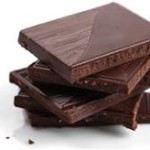 SEMISWEET, DARK AND BITTERSWEET CHOCOLATE
SEMISWEET, DARK AND BITTERSWEET CHOCOLATE
Contains at least 35% chocolate liquor, plus cocoa butter and sugar in varying amounts. There is no technical difference between bittersweet and semisweet types of chocolate, and they are often referred to as “dark.” Note that there is such a thing as “bittersweet (or semisweet) baking chocolate,” which is sweetened cocoa liquor without the added cocoa butter.
The difference between dark chocolate and milk chocolate is that it does not have any milk solids added. Dark chocolate will generally have a higher percentage of cocoa solids and can range from 30% to 80% in cocoa solid make-up. Because of this, it is fuller in real chocolate taste and results in a drier, more chalky texture. Perhaps the most pronounced difference in taste is the deeper bitterness of dark chocolate which tickles the palette in aftertaste.
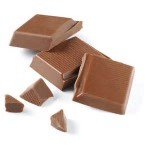
MILK CHOCOLATE
Contains at least 10% chocolate liquor, plus cocoa butter and sugar in varying amounts, and at least 12% milk (milk, cream, milk powder, etc) and at least 25% should be cocoa solids (although there are exceptions for lower cocoa solid content where it can be traded as ‘family milk chocolate’). Cocoa butter, vanilla, milk fats and lecithin are also often used
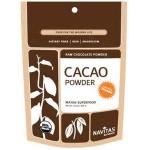 COCOA aka Cocoa Powder, Unsweetened Cocoa Powder, Unsweetened Cocoa
COCOA aka Cocoa Powder, Unsweetened Cocoa Powder, Unsweetened Cocoa
Cocao powder is made by slamming chocolate liquor with a hydraulic press to expel the fat, i.e. the cocoa butter. What’s left is allowed to harden, and then it is crushed into a powder. There is roughly 10-20% fat remaining in the powder. Cocoa powder is often used in low fat cooking because it retains the chocolate flavor but has much of the fat removed.
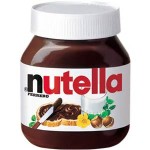 GIANDUIA pronounced zhahn-DOO-yuh
GIANDUIA pronounced zhahn-DOO-yuh
This type of chocolate is made with toasted hazelnuts or almonds ground into powder. It still has a smooth, chocolatey texture, but has the wonderful flavor of hazelnuts. It comes in milk or dark chocolate varieties. Gianduja chocolate can be used as a flavoring or as a substitute for milk or dark chocolate. At room temperature it is soft enough to be rolled or cut, but is too soft to use for molding chocolates. Nutella is a commercial example of this type of chocolate.
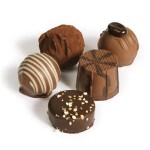 CHOCOLATE CANDY aka Chocolate Candies, Truffles, Creams, Pralines, etc.
CHOCOLATE CANDY aka Chocolate Candies, Truffles, Creams, Pralines, etc.
When people speak of “chocolates” in the plural, they are typically referring to chocolate candies, like truffles, chocolate creams, chocolate-covered nuts, and that sort of thing. “Chocolates” are candies made from other types of chocolate.
Okay, got the goods? Make it GOOD DARK chocolate and eat in moderation. Less than 100 kcal and nothing processed in the labels. Learn more about healthy eating and living with our awesome T School (T is for Transformation) at Pilates 1901!
 Click here for more information on T School, our life and body transformation program which can help you do all of the above!
Click here for more information on T School, our life and body transformation program which can help you do all of the above!- Click here for more accountability in your goals with our Integrative Nutrition Coaching program.
- Click here to email Tina today!
Have a favorite treat you’d like to share? Post it below. Because it takes a village!


Leave a Reply